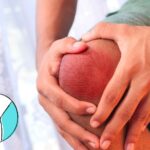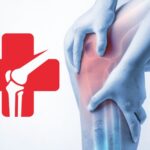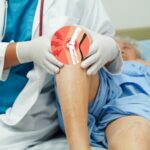Suppose pain and stiffness from hip osteoarthritis limit your ability to participate in daily activities, and other treatments have failed. In that case, surgeons may prescribe surgery to remove damaged cartilage or replace the arthritic joint with long-lasting artificial pieces.
Dr Simon Thomas, a hip replacement surgeon in Delhi is a seasoned hip expert, and according to him, hip replacement procedures can help relieve hip pain and stiffness while improving function and mobility.
What are hip replacement surgery and osteoarthritis?
Hip replacement surgery involves removing damaged hip joint pieces, often the ball and socket, and replacing them with new metal, plastic, or ceramic components.
The most common reason for a hip replacement is osteoarthritis. Osteoarthritis is a degenerative joint condition that gradually damages the joint. It is the most common hip arthritis and affect other joints. Hip osteoarthritis is caused by wear and tear from aging and worsens with time.
How can total hip replacement help in osteoarthritis?
Total hip replacement cures osteoarthritis in the hip completely. It significantly enhances your quality of life by reducing pain and improving hip stability and range of motion.
The procedure of total hip replacement surgery
The surgery is completed within two hours. To carry out a hip replacement, the surgeon:
- Make an incision above the hip through the layers of tissue.
- Removes diseased and damaged bone and cartilage, but leaves healthy bone intact.
- Implants the new socket into the pelvic bone.
- Insert a metal stem into the top of the thigh bone and top it with a new ball.
Benefits of hip replacement to cure osteoarthritis
Hip replacement surgery can be a highly successful treatment for osteoarthritis in the hip. When medicines, lotion, physical therapy, and lifestyle changes do not offer relief, hip replacement surgery is advised. The benefits of hip replacements to cure osteoarthritis are explained below:
Relief from pain
Osteoarthritis often causes discomfort and severe pain in the hips due to damage to the bones. Hip replacement helps remove the damaged cartilage and replaces it with artificial components made of metal or plastic. The artificial joint reduces the friction and eliminates the source of pain, providing much-needed relief to the patients.
Restoring mobility
Osteoarthritis can severely limit mobility and function, making even simple tasks like walking or climbing stairs difficult and uncomfortable. Replacing the damaged hip joint with an artificial one, hip replacement restores mobility and comfort.
Restored stability
Osteoarthritis can induce instability in the hip joint, increasing the risk of falls and injury. Hip replacement surgery replaces the injured joint with a stable artificial implant, increasing hip stability and lowering the risk of falls and fractures.
Long-term results
Hip replacement surgery is a long-lasting option for osteoarthritis, with many patients reporting considerable pain reduction and increased function for years or even decades following the procedure. It is the most trusted option among many patients.
Osteoarthritis diagnosis
You must first consult with an orthopaedic surgeon before undergoing hip replacement surgery. The surgeon will evaluate you to see how the damaged hip compares to the other hip. They will assess your range of motion (the distance you can move your hip and leg) and the strength of the muscles that support your hip and leg. The surgeon will inquire about your medical history, including your symptoms, therapies you’ve tried, and any drugs or supplements you use.
Image testing
- X-ray: Cartilage is not shown on X-ray scans, but cartilage loss is indicated by a narrowing of the gap between the bones in your joint. An X-ray might also reveal bone spurs surrounding a joint.
- MRI: Magnetic resonance imaging (MRI) creates comprehensive pictures of bone and soft tissues, including cartilage, by using radio waves and a strong magnetic field. An MRI is not often required to diagnose osteoarthritis, although it can assist offer additional information in difficult instances.
- Blood tests: Although there is no blood test to diagnose osteoarthritis, some tests can help rule out other causes of joint pain, such as rheumatoid arthritis.
- Fluid analysis: Your surgeon may use a needle to drain fluid from an afflicted joint. The fluid is then examined for inflammation to identify whether your discomfort is due to gout, an infection, or osteoarthritis.
Self-care after the treatment
Learn everything you can about the condition and how to manage it, including how lifestyle changes might impact your symptoms. Exercising and reducing weight if you are overweight are methods to reduce joint pain and stiffness caused by osteoarthritis.
- Low-impact exercise: Low-impact exercise can help you build endurance and strengthen the muscles around your joints, making it stronger. Try walking, cycling, or water aerobics. If you have new joint discomfort, cease.
- Reduce weight: Carrying excess weight puts more strain on your weight-bearing joints, such as your knees and hip. Even moderate weight reduction might help ease pressure and pain. Consult a dietician about healthy strategies to reduce weight.
- Yoga: Yoga combines gentle movements and stretches with deep breathing. Many people utilise these therapies to relieve stress in their lives, and studies show that yoga may alleviate osteoarthritis pain and improve mobility.
- Make sure the yoga you pick is moderate and that your instructor understands which joints are impacted. Avoid any moves that cause joint discomfort.
Today’s modern joint implants are composed of more lasting materials than in the past, and the majority of patients who receive a prosthetic hip do not experience issues for at least 20 years. Because of increased lifespan, complete hip replacement is now possible for young, active people, who may get this surgery done to eliminate persistent hip discomfort.
Consult with a leading hip replacement surgeon in Delhi like, Dr Simon Thomas to conveniently get the treatment and aftercare to cure the osteoarthritis.
.













